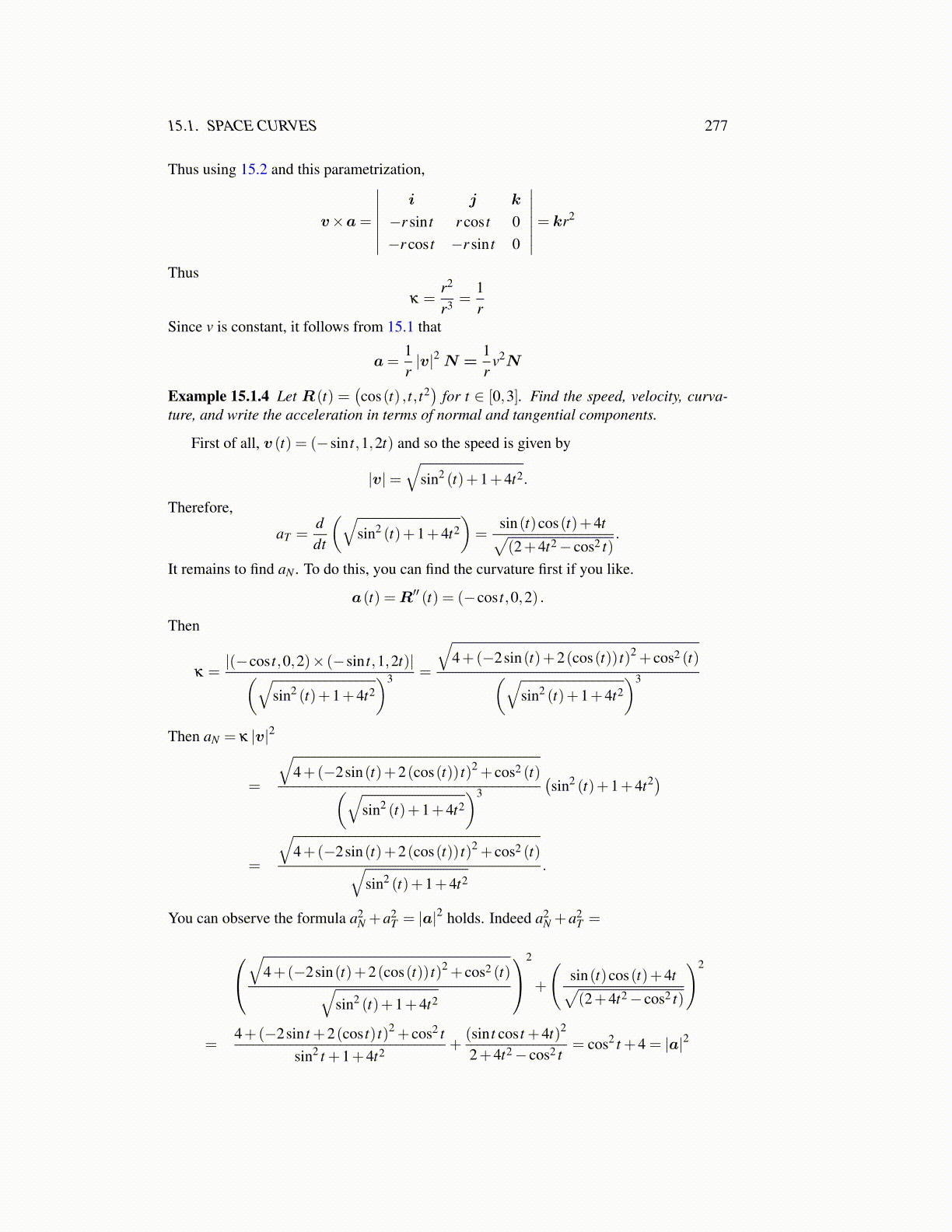
15.1. SPACE CURVES 277
Thus using 15.2 and this parametrization,
v×a=
∣∣∣∣∣∣∣i j k
−r sin t r cos t 0−r cos t −r sin t 0
∣∣∣∣∣∣∣= kr2
Thus
κ =r2
r3 =1r
Since v is constant, it follows from 15.1 that
a=1r|v|2 N =
1r
v2N
Example 15.1.4 Let R(t) =(cos(t) , t, t2
)for t ∈ [0,3]. Find the speed, velocity, curva-
ture, and write the acceleration in terms of normal and tangential components.
First of all, v (t) = (−sin t,1,2t) and so the speed is given by
|v|=√
sin2 (t)+1+4t2.
Therefore,
aT =ddt
(√sin2 (t)+1+4t2
)=
sin(t)cos(t)+4t√(2+4t2− cos2 t)
.
It remains to find aN . To do this, you can find the curvature first if you like.
a(t) =R′′ (t) = (−cos t,0,2) .
Then
κ =|(−cos t,0,2)× (−sin t,1,2t)|(√
sin2 (t)+1+4t2
)3 =
√4+(−2sin(t)+2(cos(t)) t)2 + cos2 (t)(√
sin2 (t)+1+4t2
)3
Then aN = κ |v|2
=
√4+(−2sin(t)+2(cos(t)) t)2 + cos2 (t)(√
sin2 (t)+1+4t2
)3
(sin2 (t)+1+4t2)
=
√4+(−2sin(t)+2(cos(t)) t)2 + cos2 (t)√
sin2 (t)+1+4t2.
You can observe the formula a2N +a2
T = |a|2 holds. Indeed a2N +a2
T =
√
4+(−2sin(t)+2(cos(t)) t)2 + cos2 (t)√sin2 (t)+1+4t2
2
+
(sin(t)cos(t)+4t√(2+4t2− cos2 t)
)2
=4+(−2sin t +2(cos t) t)2 + cos2 t
sin2 t +1+4t2+
(sin t cos t +4t)2
2+4t2− cos2 t= cos2 t +4 = |a|2